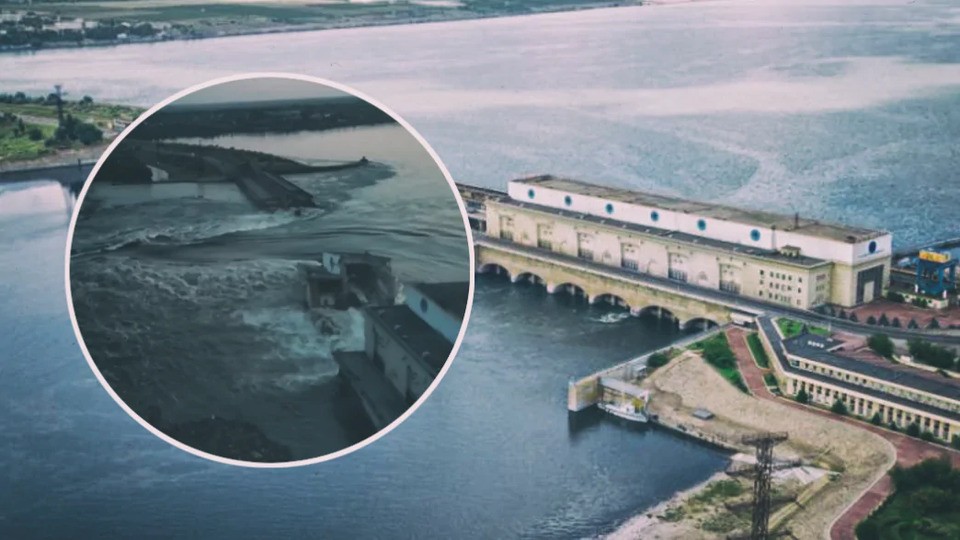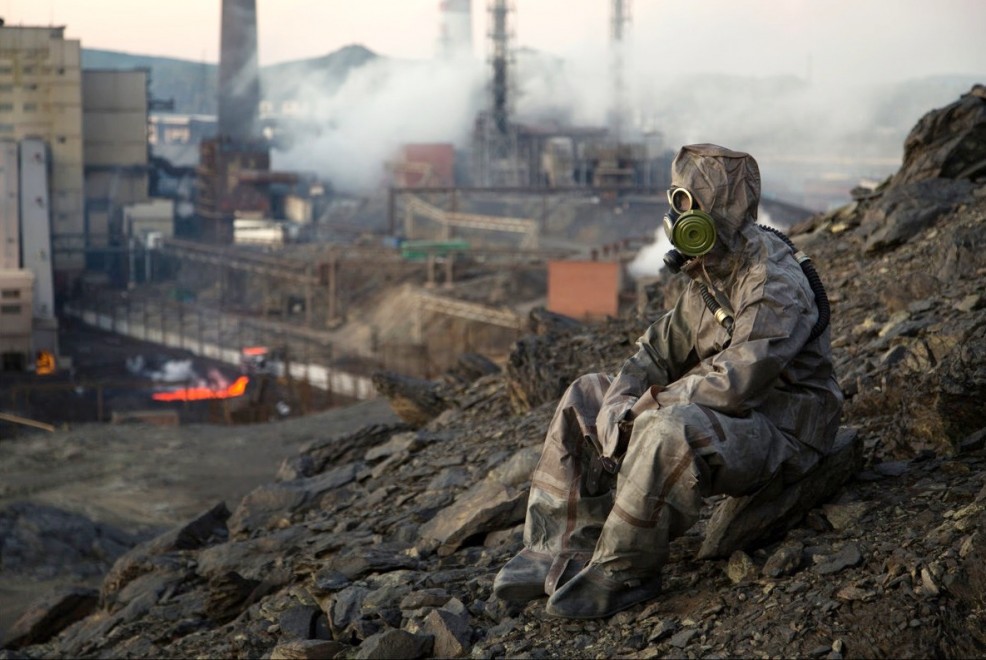Ukraine at the epicenter of the climate storm: war and global change under the lens of science

World Environment Day is celebrated on June 5. This day is one of the most important events in environmental issues, it is celebrated annually in more than 100 countries of the world.
Today, environmental problems are among the most important, determining the level of well-being of the entire world civilization and, in particular, of our country. Ukraine, like other countries, faces these challenges, but also faced new, no less threatening – abnormal climate changes. Tornadoes in unusual regions, dust storms from the distant Sahara, sudden cracks in the ground and underground tremors – these unusual phenomena remind us of the approaching climatic apocalypse.
Such anomalies, which have shaken Ukraine one after another, are an alarming signal that climate change does not bypass even countries that are far from traditional risk zones. These changes can lead to catastrophic consequences in the future if urgent measures are not taken to mitigate and adapt to them.
FACT journalist Yuliya Khomenko spoke with Nataliya Zinovchuk, an employee of the Scientific Research Institute of Agroecology and Nature Management of the National Academy of Sciences of Ukraine (Kyiv) about the climatic anomalies that Ukraine is currently experiencing, and their possible causes and consequences.
How does the destruction of the Kakhovskaya HPP affect the climate in Ukraine in general?
The global climate of Ukraine is unlikely to undergo significant changes due to the undermining of the Kakhovskaya HPP, but local ecological and climatic systems may be significantly disrupted. It can be assumed that these local changes may affect global climate processes, but such effects are difficult to predict. For example, the climate in Ukraine may become a little drier, but the exact consequences of these changes can only be assessed over time.

How do war, dead bodies, chemical compounds and poisonous gases affect the composition of soil, water and air? Are there concrete data on the scale of pollution?
The war is destroying Ukraine’s environment, and the most visible consequences are observed at the local level. Soil, water and air pollution from fighting, explosions and fires is an extremely serious problem, and the destruction of infrastructure only exacerbates it. Burials of the dead carry the risk of contamination of soil and water, and can also cause outbreaks of infectious diseases. Collecting accurate data is difficult due to active hostilities, but there is evidence of mass death of animals and people.

Can war lead to environmental disaster?
Yes, such a risk exists. If the war continues for a long time, there may be an ecological disaster. The use of various types of weapons, especially explosives, leads to the release of a large number of harmful substances into the environment. Every bomb or rocket that goes off consists of certain chemical elements that settle on the soil and trees and dissolve in the air. Over time, they get into the water. Explosions on agricultural land are especially dangerous, as it can lead to long-term contamination of soil and agricultural products. The extent of contamination from a munitions explosion depends on many factors, such as the location of the explosion, the type of munition, weather conditions, and landscape features. Currently, there is no exact information on the level of pollution as a result of hostilities, but it can be assumed that it is significant, especially in Odesa and Kherson regions, which are important agricultural regions of Ukraine. How safe are fruits and vegetables grown in these areas remains an open question. Detailed studies and analyzes are needed to determine the level of contamination of soil, water and vegetation, and to assess possible risks to human health. It is important to pay attention to the problem of environmental pollution due to hostilities and to take measures to solve it. This includes monitoring the state of the environment, conducting research, cleaning up contaminated areas and informing the public about possible risks.

What specific types of military activity (explosions, fires, destruction of infrastructure) most affect the air quality and climate in Ukraine during the war?
Virtually all types of military activity have a negative impact on the state of the air, although the consequences depend on the direction and strength of the wind at the time of emissions, the time of day and the specific type of activity. However, atmospheric masses spread quickly, and pollution arising in Ukraine due to cross-border air movement inevitably affects neighboring countries. Explosions lead to air and soil pollution, fires destroy forests and vegetation, and the destruction of infrastructure causes leaks of harmful substances. Therefore, it can be argued that not only Europe, but also all neighboring countries suffer from the consequences of military operations in Ukraine.
How does the destruction of natural ecosystems (forests, steppes, water bodies) as a result of the war affect Ukraine’s ability to adapt to climate change?
Military action and climate change are different processes of different nature. Military actions, in turn, lead to significant environmental pollution, destruction of ecosystems and loss of biodiversity, which negatively affects nature’s ability to self-restore and adapt to climate change. However, military action itself is not the cause of climate change. Military actions lead to air, water and soil pollution, destruction of natural ecosystems – forests, steppes, reservoirs. This, in turn, reduces Ukraine’s ability to adapt to climate changes that occur regardless of military actions. However, military actions themselves do not affect global climate processes.
Tell us about dust storms from the Sahara, why and how they reach Ukraine? There is information that they are not from the Sahara, but people are simply poisoned, and frosts are specially created to destroy crops. This is true? Why is it dangerous for Ukrainians?
The modern climate is such that atmospheric masses move at a very high speed, if earlier dust storms from the Sahara reached Ukraine in a week, now it can happen in a matter of days. This is due to a change in the direction and speed of atmospheric air movement, i.e. the climate has changed to such an extent that atmospheric masses are now moving abnormally. Regarding the question of the artificial origin of dust storms, there is no confirmed information that they are specially created. Although such rumors exist, especially in the countries of Southern Europe, which suffer from this phenomenon. It is true that rains with dissolved dust particles fall in Ukraine after explosions. However, dust storms and pollution from explosions are different phenomena, although they can increase the negative impact of each other. Regarding the safety of dust storms, the opinions of experts differ. The Ukrainian Meteorological Hydrometeorological Center claims that they do not pose a serious threat, but other sources report possible allergic reactions and respiratory problems. In countries where dust storms are more intense, such as Spain, governments are taking measures such as mandating the wearing of masks. This is due to the fact that dust can contain harmful substances, in particular heavy metals. Even if a dust storm does not pose a direct threat to life, it can still have a negative impact on health, especially for people with chronic diseases of the respiratory system.
What other climatic anomalies were observed in Ukraine during the war?
Ukraine is experiencing a period of various anomalous climatic phenomena that cause concern about the future. Dust from the Sahara is observed, tornadoes have been recorded in the Khmelnytskyi and Vinnytsia regions, large cracks in the ground have appeared, and imperceptible earthquakes are also occurring, which, according to forecasts, may become more noticeable in the future. Particularly alarming is the intensification of gale-force winds, which have already caused significant damage to agricultural land and infrastructure. Breaking trees, tearing off roofs and causing power outages, squalls are becoming more frequent and destructive. Climate changes, which destabilize atmospheric processes and form more powerful cyclones, contribute to this phenomenon. The squalls are expected to be accompanied by heavy downpours and hail, which will further increase their destructive power. In some regions of the country, intense precipitation has already led to inundation and flooding, especially in mountainous areas. Hail and gusty winds are becoming more frequent and destructive, causing significant damage to farmland and infrastructure.
Can Ukraine feel the consequences of global warming and melting glaciers?
Melting glaciers are a serious problem caused by global warming. An increase in the temperature of water in the oceans, especially in Antarctica, leads to accelerated melting of the glaciers below. This, in turn, can have a significant impact on the climate, in particular lead to cooling in Europe and Ukraine. According to ocean scientists, the speed of the Gulf Stream, a warm current that affects Europe’s climate, is slowing down. This can lead to a sharp drop in temperature and even permanent winter in the region. Ukraine is already experiencing the effects of climate change, such as an increase in the number of extreme weather events, droughts and floods. The melting of glaciers can also lead to a rise in sea level, which threatens to flood the coastal regions of Ukraine. It is important to understand that climate change is a global problem that requires the joint efforts of all countries of the world to solve it. It is necessary to take measures to reduce greenhouse gas emissions, develop renewable energy sources, and adapt to new climate conditions.
What are the biggest climatic dangers for Ukraine and Europe? Are there countries that suffer from climate change more than Ukraine?
Ukraine, like many other countries of the world, is facing increasing climatic changes, however, unlike some regions, where the consequences are already catastrophic. Our state has not yet experienced such large-scale disasters, but this is no reason for composure. Anomalous phenomena, such as dust storms from the Sahara, tornadoes, cracks in the ground and underground tremors, indicate that the climate system of Ukraine is already undergoing changes, and the strengthening of gale-force winds, intense precipitation, hail and other extreme weather events are becoming more frequent and destructive. . Climate change is a global process that affects every corner of the planet, and even in remote regions like China, where information about environmental problems is often withheld, there are serious consequences, such as land subsidence in large cities due to excessive irrigation.
Other countries, such as Indonesia, Brazil and others, are also suffering from an increase in earthquakes and other natural disasters, and the situation in the United States is particularly alarming, where the number of tornadoes in recent months has significantly exceeded the average. Against the background of these global changes, Ukraine still looks relatively stable, however, this does not mean that we can ignore the problem, on the contrary, it is necessary to take measures to adapt to climate changes and minimize their negative consequences.
Recently, Ukraine, like many other countries, is facing a number of abnormal climatic phenomena. Can we relate this to the global changes taking place on the planet?
Of course, what we observe in Ukraine – dust storms, tornadoes, cracks in the ground, earthquakes, abnormal heat and rains – is only the tip of the iceberg, because our planet is going through a period of deep transformations that are not limited only to the Earth, but take place on the scale of the entire Solar System systems.
Scientific evidence shows that every 12 thousand years there are changes not only on Earth, but also in space, and Mars and the Sun are subject to the same influence, since all planets enter this 12 thousand-year cycle. The increase in cosmic energy, associated with an increase in the intensity of certain cosmic rays that penetrate through the Earth to its core, affects not only the Earth, but also other planets and even the Sun. These rays heat up the magma, which leads to an increase in its activity and literally the Earth is heated from the inside, which is manifested in an increase in the number of earthquakes and volcanic activity. Changes in the rotation of the Earth’s axis and its speed have also been recorded, which also affects the climate.
What are the predictions for the future?
Unfortunately, trends indicate that climate change will intensify. The number and intensity of extreme weather events will increase, posing a serious challenge to humanity.
What can be done to minimize the negative consequences?
It is necessary to take comprehensive measures: develop sustainable infrastructure, restore ecosystems, introduce the latest technologies and inform the population about the need to adapt to new climatic conditions. Only by joint efforts will we be able to reduce risks and ensure sustainable development in the future.





